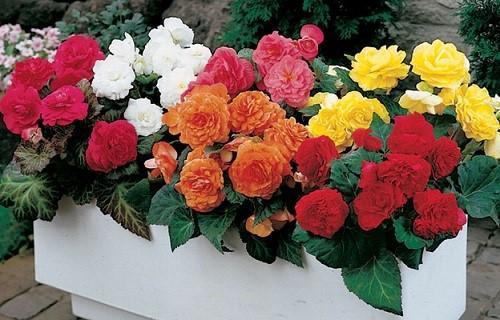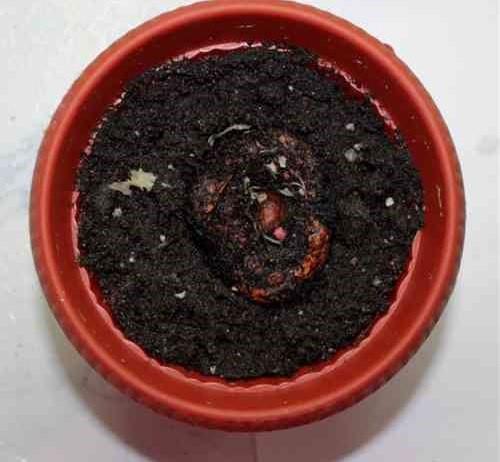Secrets of planting tuberous terry begonia
 Tuberous terry begonias are absolutely amazing plants. The young bush, of course, has beautiful foliage, but nothing special catches the eye. But with the onset of the flowering time, it fabulously turns into one beautiful flower. So many terry lush inflorescences are formed on the plant that sometimes the foliage is practically invisible. Begonia flowers are very similar to roses and come in a wide variety of colors.
Tuberous terry begonias are absolutely amazing plants. The young bush, of course, has beautiful foliage, but nothing special catches the eye. But with the onset of the flowering time, it fabulously turns into one beautiful flower. So many terry lush inflorescences are formed on the plant that sometimes the foliage is practically invisible. Begonia flowers are very similar to roses and come in a wide variety of colors.
How to grow such beauty at home and what should you pay attention to when planting tuberous begonias? Experienced flower growers willingly share their observations and skills.
Preparing tubers for planting
Before planting begonia tubers, you must first prepare. This is especially important for planting material purchased in a store. It is not always possible to buy high-quality healthy begonias. It is not known how long and in what conditions they were stored, so spoiled tubers sometimes come across. With a small area of damage and proper processing, they are also used for planting.
If tubers are purchased in winter, they must be additionally insulated during transportation, for example, wrapped in a newspaper. The buds of frozen tubers may not wake up.
So, before landing:
- cut off all dry roots on the tubers and remove dried scales;
- place the tuber in a solution of a fungicide or growth stimulant so that its upper convex part protrudes above the water;
- stand for 30-40 minutes and remove.
How to plant tubers correctly?

For begonias, you need to pick up a shallow, but wide enough pot.
Now it's time to start planting:
- At the bottom of the flowerpot, it is imperative to pour a drainage layer. It will save the flower from decay as a result of stagnant water.
- Put loose nutrient soil on top of the drainage. In dense soil, the plant will not be able to actively grow.
- Make a small indentation in the center of the pot and place the tuber in it. It is not necessary to completely cover with earth, the upper part of the tuber should appear above the soil. With a deep planting, decay is possible.
- Sprinkle the planted begonia along the edge of the pot with Fitosporin solution.
- Place the flowerpot on a well-lit window.
Tuberous begonia responds well to the introduction of prolonged fertilizers, which provide her with small doses of nutrition for a long time. Such preparations can be used immediately after planting the plant by placing them in a pot according to the instructions.